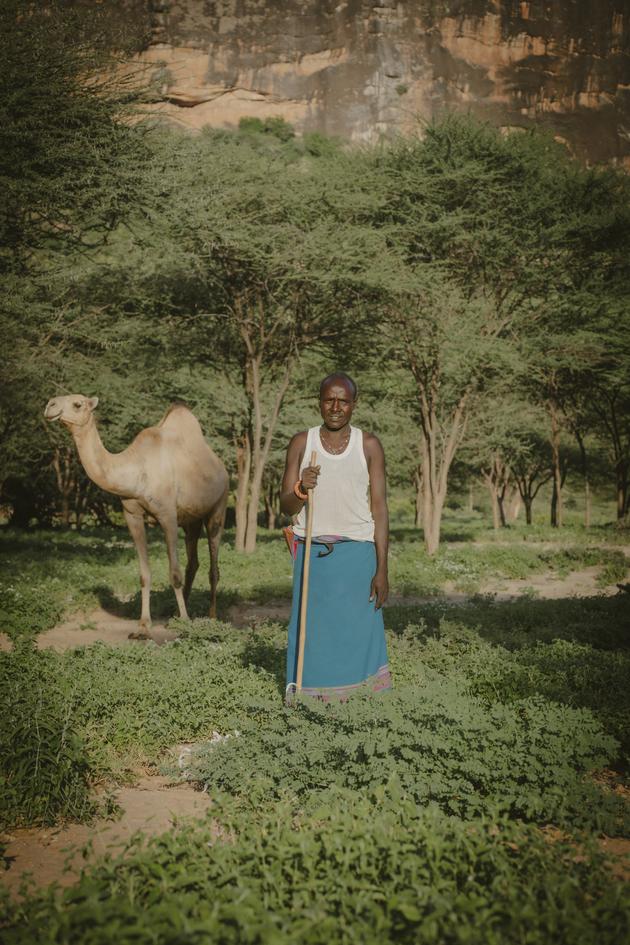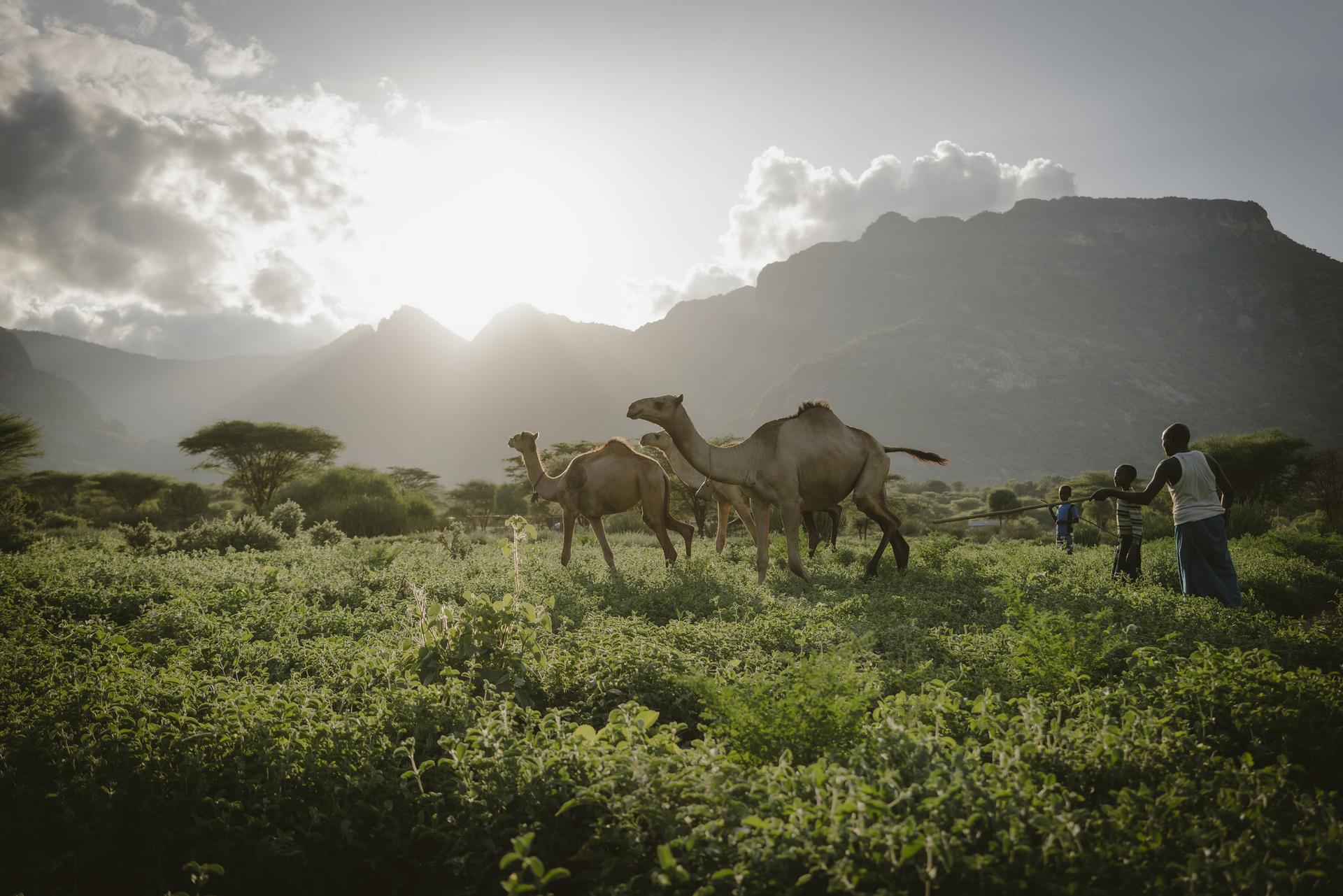


Camels replace cows in Kenya due to climate change
FeatureThree years of drought have decimated cattle herds in the Samburu region. Herders are now investing in one-humped camels whose highly sought-after milk is increasingly consumed.
Lkaraiko Lemalinga looks at her like she's the goose that lays the golden eggs. "When I received the camel I was shaking, I only realized the camel was mine after three days," smiled the 47-year-old breeder, surrounded by his six children. The female camel he got in March is still too young to produce milk but she already promises a peaceful future for his family.

The farmer, looking tired, relies on a prosthesis on his right leg. It is because of his handicap that he was one of the beneficiaries of the camel distribution run by the Samburu regional government which allocates around 1,000 animals to local people each year. A way for the authorities of this county in northern Kenya, to help semi-nomadic herders who are often on the front line in the face of climate change. "In the village, during the drought, 80% of the cattle was killed," explained Simon Lalampaa, administrator of the town of Ngurunit and its 3,000 residents.
Lemalinga is no exception. Between 2020 and 2023, during the worst drought the Horn of Africa had seen in 40 years, extreme temperatures and lack of rain decimated his herd: Five of his seven cows and 17 of his 20 goats died. "Cows are not suited for this climate. It's climate destiny, it happens, we cannot control it," he said calmly. "That's why everyone wants to own a camel these days."
'Iconic animal'
Although one-humped camels – also known as "Arabian camels" – are historically the prerogative of the Somali minority in north-eastern Kenya, camelids are gradually becoming indispensable animals for all pastoral communities living in the country's arid north. They compensate for the slow death of livestock, exhausted during droughts, by walking for days in search of increasingly rare watering holes and disappearing pastures.

"20 years ago, as a kid, I can't recall seeing camels in Ngurunit county. Today, it's the most common livestock," explained administrator Simon Lalampaa, who has witnessed this rapid demographic evolution among the herds. The Samburu (400,000 people) have understood the value of this animal with its incredible stamina, whose 15-kg hump serves as a fat reserve, enabling it to go without food and water for five days.
"Cattle are the first to die in drought, camels the last," summed up Piers Simpkin, consultant for Mercy Corps, who has been working on the issue for four decades. "They are more resistant, drink less, eat less, contract fewer diseases and produce more milk. They are the most efficient animal in these climates." What's more, unlike cattle, camels feed on the foliage of thorny plants and shrubs, reducing the pressure on grazing land, which is already subject to intense competition in the north of the country. The Kenyan army is deployed there to fight banditry, largely motivated by cattle rustling.
You have 63.05% of this article left to read. The rest is for subscribers only.
